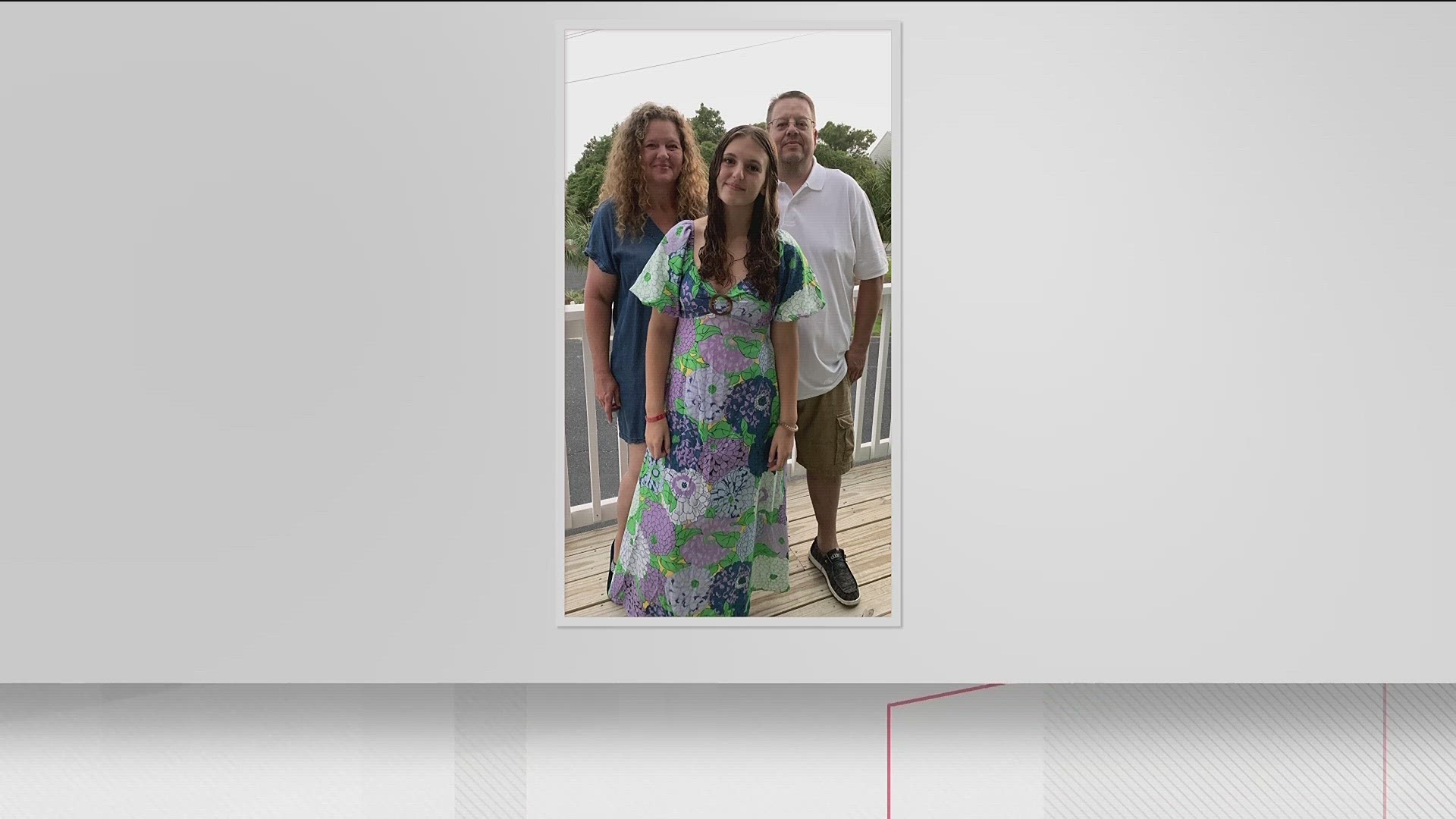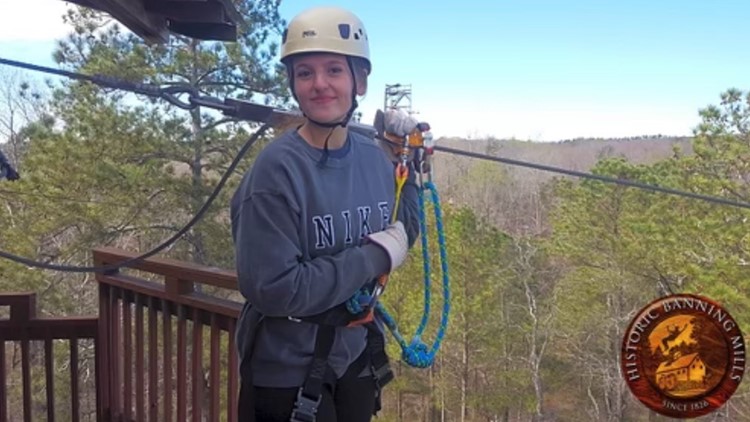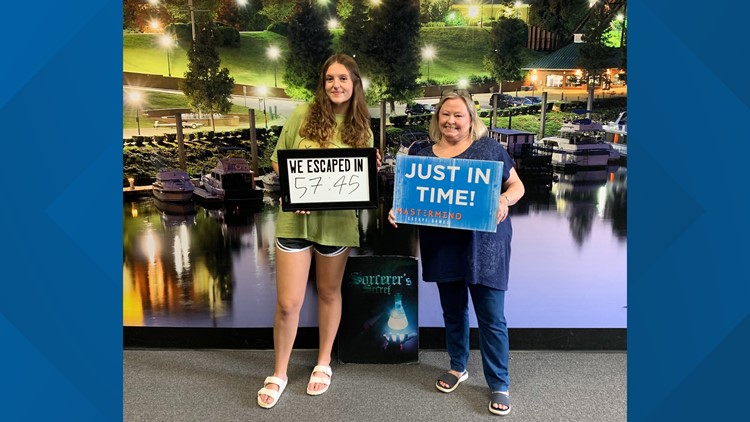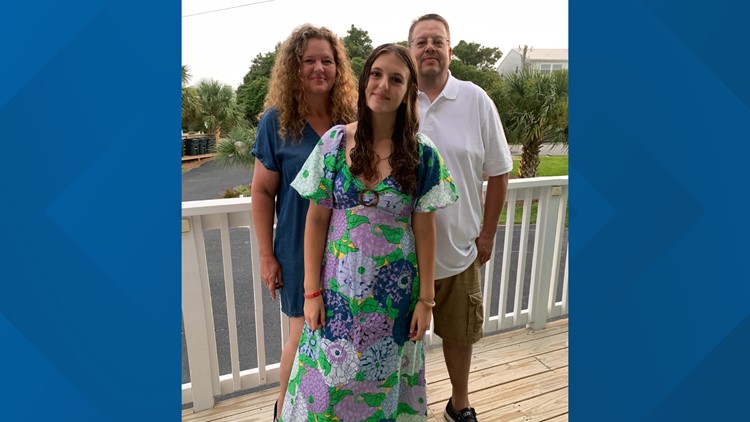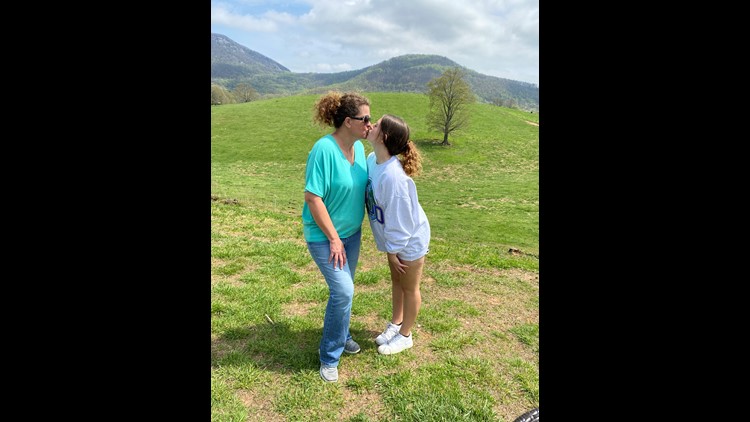DEARING, Ga. — A teenager has died after being infected by a rare brain-eating amoeba; no one in Georgia has died from the disease for over two decades, according to the Centers for Disease Control.
It all happened in 11 days; 17-year-old Megan Ebenroth's mother said the teen went swimming in a lake by her home in McDuffie County, then on July 22, she was dead.
"It was all such a blur because her mental state changed so drastically," Chrissy Ebenroth said, who is Megan's mother.
Known as the Naegleria fowleri infection, the Georgia Department of Public Health said it can cause a brain infection when water goes up the nose. The amoeba cannot infect people if they swallow water, and it's not spread from person to person.
Megan, a rising senior at Thomson High School near Augusta, is the sixth person in Georgia to die from the amoeba infection since 1962.
"It just doesn't feel real," Chrissy Ebenroth said. "It seems like she's going to walk into my house at any moment. It just doesn't feel like this has happened to us."
'Brain-eating amoeba' kills 17-year old Georgia resident Megan Ebenroth
Given the low infection rate, Chrissy Ebenroth did not say where her daughter went swimming to avoid alarming families. According to the state health department, the amoeba occurs naturally and can't be controlled.
Her mother said that Megan experienced severe headaches, fever and loss of balance during her final days. The same day Megan arrived at the hospital, she was intubated and put into a medically induced coma.
"The stage we were at was not one Megan could come back from," Ebenroth explained.
The quick worsening of Megan's symptoms follows the expected trajectory of Primary amebic meningoencephalitis (PAM), the severe brain infection caused by Naegleria fowleri ameba.
After symptoms start, the infection "progresses rapidly and usually causes death within about five days," according to the CDC.
Symptoms for the brain infection can be mild at first, usually starting five days after infection, the CDC reports. Symptoms can include headache, fever, nausea or vomiting. Later symptoms can include confusion, lack of attention to people and surroundings, loss of balance, seizures and hallucinations.
"She was unable to communicate with us," Chrissy Ebenroth said. "She couldn't walk at that point."
The brain-eating amoeba is difficult to diagnose.

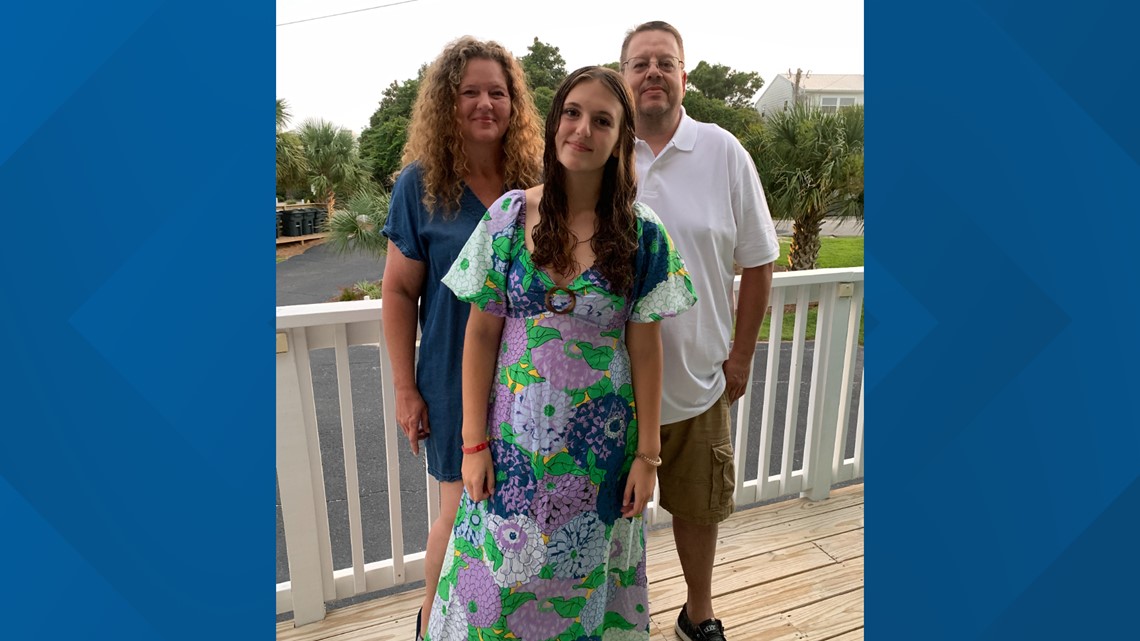
Specific lab tests must be used to look for amoeba samples, but these tests are available only in a few laboratories in the U.S., And sometimes diagnosis happens after the patient's death, the CDC said. This is something Chrissy Ebenroth wants to change.
"Going forward, I want that to be one of my main focuses," she said, "to find a way to diagnose this earlier."
Chrissy Ebenroth recently contacted Dr. Dennis Kyle, a professor of Infectious Diseases and Cellular Biology at the University of Georgia, who is working on a quicker method to diagnose and cure the amoeba infection.
"It's not something I could have ever expected," she said. "You put your child in a car, and you pray for their safety. But just enjoying your summer at the lake does not seem like this would be such a great fear."
Megan's funeral was held on July 26 at the family's church, Fort Creek Baptist Church, in Dearing, Georgia. To honor Megan, a pavilion dedicated to her is set to be built at the church. The memorial will be called 'birds nest' after Megan's nickname, 'Baby Bird.'
"She was just full of life, full of energy and so compassionate," Chrissy Ebenroth shared. "She let it be known every day that she loved us, and we let her know that we loved her every single day."
Click here to visit the online fundraiser Megan's family and friends set up.
'Brain-eating amoeba' kills 17-year old Georgia resident Megan Ebenroth
According to the health department, the amoeba lives in soil and warm freshwater lakes, rivers, ponds and hot springs. Bodies of salt water, like the ocean, are free of Naegleria fowleri, and it's not found in properly treated drinking water and swimming pools. However, there's no environmental test for it.
How to avoid Naegleria fowleri?
The amoeba only affects humans, not animals, and there's no cure for those who become infected, so the best way to battle it is to avoid it.
The amoeba occurs naturally and can't be controlled, according to the health department, but some precautions from the CDC include:
- Avoid jumping or diving into bodies of warm freshwater, especially during the summer.
- Hold your nose shut, use nose clips, or keep your head above water when in bodies of warm, fresh water bodies.
- Avoid putting your head underwater in hot springs and other untreated geothermal waters.
- Avoid digging in, or stirring up, the sediment in shallow, warm fresh water. The amoebae are more likely to live in sediment at the bottom of lakes, ponds and rivers.
CDC epidemiologist Julia Haston said the risk of getting infected is low - but not zero.
"But we can lower it even further by doing things like avoiding submerging your head in freshwater, or using nose clips, or holding your nose when you're swimming this summer," Haston said.

